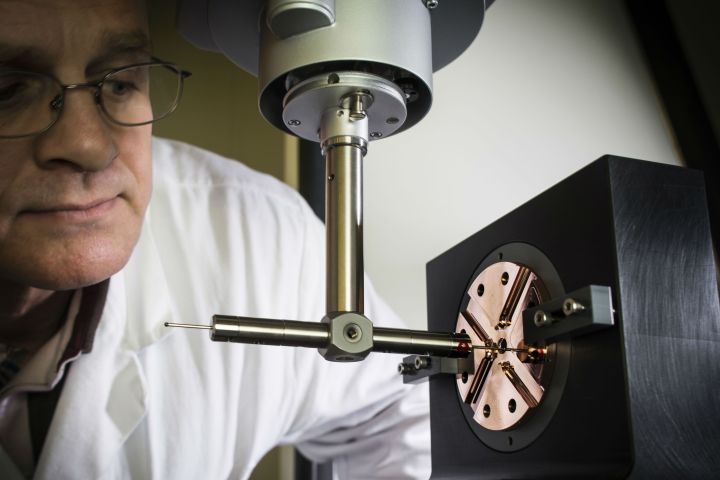
Mathematicians and philosophers have contemplated infinity for millennia. yet even today, the concept evades our understanding. Would an infinite number of monkeys banging away on an infinite number of keyboards actually write each of Shakespeare’s plays? If there are an infinite number of half-way points between point A and point B, how can anyone ever travel? It’s absolutely mind-bending, but as an abstract concept, infinity can be highly useful. it’s only when we try to rationalize it that things tend to get complicated.
Scientists at the European Organization for Nuclear Research (CERN) have turned to infinity to solve some of physic’s most complicated problems, like finding the elusive Higgs boson particle and making mini-Big Bangs. To help its researchers out, CERN installed an unassuming but meticulous device, which it calls Infinity.
For a few years now, CERN’s ultra-precision machine has helped physicists in the Meteorology laboratory calibrate parts for it’s billion-dollar colliders. Infinity can measure one-ton components to a precision that’s about 300 times smaller than a human hair. There’s little room for error when it comes to smashing particles. But the measurement process is slow and laborious. It takes nearly three days to set up measurements, and another hour to probe components to determine their size. Afterwards CERN physicists create 3D diagrams from Infinity’s calculations.
This week, CERN featured the machine on the organization’s Instagram, with a close-up photo that shows just how truly ordinary it appears.
But don’t judge the machine by its appearance. With remarkable precision, the infinity machine takes special measurements of the Compact Linear Collider (CLIC) accelerating structures, which aim to smash electrons and positrons (anti-electrons) at unfathomable speeds. Where the more famous Large Hadron Collider (LHC) smashes electrons and protons, CERN says CLIC’s electron-positron collisions will offer unique insight into what’s beneath basic physics.
CERN has made some exciting discoveries in recent years. In July 2012, CERN physicists announced the discovery of the Higgs boson particle, a.k.a the God particle, which may illuminate some of the biggest unsolved problems in physics. And just last December, two independent teams of physicists detected another particle that’s similar to the Higgs but bigger and much more unique. The infinity machine may be a little device among giants, but it still plays an important role in CERN’s research.


